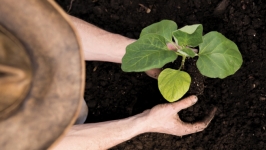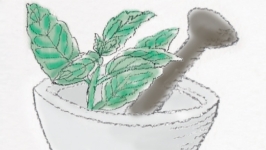Starting Your Own Veggie Garden
It’s Never Too Late to Start a Veggie Garden
It’s late summer and you’re kicking yourself because you haven’t yet started that veggie garden you promised you would. Oh, such visions you had of digging in the dirt, sweat dripping from your brow as you grow fresh, healthy food bursting with goodness.
Before you throw in the towel, know this: In Silicon Valley, it’s never too late to start your veggie garden.
You live in a dry-summer subtropical climate. “Huh?” you ask. Let me try that again. You live in one of only five Mediterranean climates in the world—meaning, lucky you can grow a variety of food 12 delicious months out of the year. This, my dear gardening enthusiast, is a point worth celebrating.
As a farmer in Los Altos, I confess that my winter harvest is no match for my summer bounty. That said, if I start now I will reap the benefits for months to come. Beets, snow peas, radishes and kale are just some of the goodies that can be gleaned before year’s end. Here are a few pointers to get you started:
Step 1: Siting your garden. Summertime vegetables typically require approximately six hours of direct sun. If you find a patch that meets this quota, consider whether it will continue to get light as the winter sun peaks lower on the horizon. An unobstructed patch of southern exposure is your best bet.
Step 2: Consider the local critters that will have a hankering for the goodness you will grow. Rabbits, raccoons, gophers and deer are common veggie predators in these parts. Be sure you have ample fencing or other means to keep them at bay. Alternatively, plant people food that animals (mostly) don’t enjoy. These include many herbs—rosemary, sage, mint and oregano—as well as artichoke, asparagus, fennel and onions.
Step 3: Soil. Soil. Soil. I know, I used to roll my eyes and grumble, “Spare me the soil sermon.” But, honest to Pete, I’ve learned the hard way that nothing matters more than the quality of your soil. It is the very lifeblood of everything you will grow. The best soil amendment is compost, which is simply decomposed organic matter. It can magically increase the drainage of tightly compacted soil or increase the water retention of loose, sandy soil, all the while providing nutrients to your beloved plants. Many Silicon Valley cities give away compost made of yard and food waste. Call your municipality to check if free compost is available near you. Keep in mind that city compost tends not to be organic. You’ll find organic compost sold by the bag at many Bay Area gardening supply stores.
Step 4: Ah, my favorite step. Selecting what to plant! A trusty planting guide is a terrific tool. My favorite is the Planting and Gardening Guide that sells for around $5 at Common Ground in Palo Alto (650.493.6072). Common Ground is also a great resource for organic seedlings. Some of the bigger garden centers—like Summer Winds and Yamagami’s—also carry a nice supply of organic plants as part of their larger offering.
Step 5: With great care, put your new babies into the ground. Dig a hole bigger than the plant needs, thereby loosening the soil for future growth of its roots. As you’re planting, hold the tiny plants lightly by their stems and avoid touching their leaves or roots. Don’t overplant, as overplanting will force your plants to fight for resources—water, food and sunlight—as they grow. Water thoroughly at planting and for several days after.
Step 6: Maintain your garden with regular weeding, pest control and watering. Once established, fertilize your garden with organic plant food. Keep good notes about the plant varieties that do and don’t thrive in your garden. Use this info to ensure the success of your future harvests.
Last but not least, savor every bite of goodness that comes from your garden. Few things in life are as satisfying (or healthy) as growing your own food and witnessing the miracle of life right in front of your very eyes!






